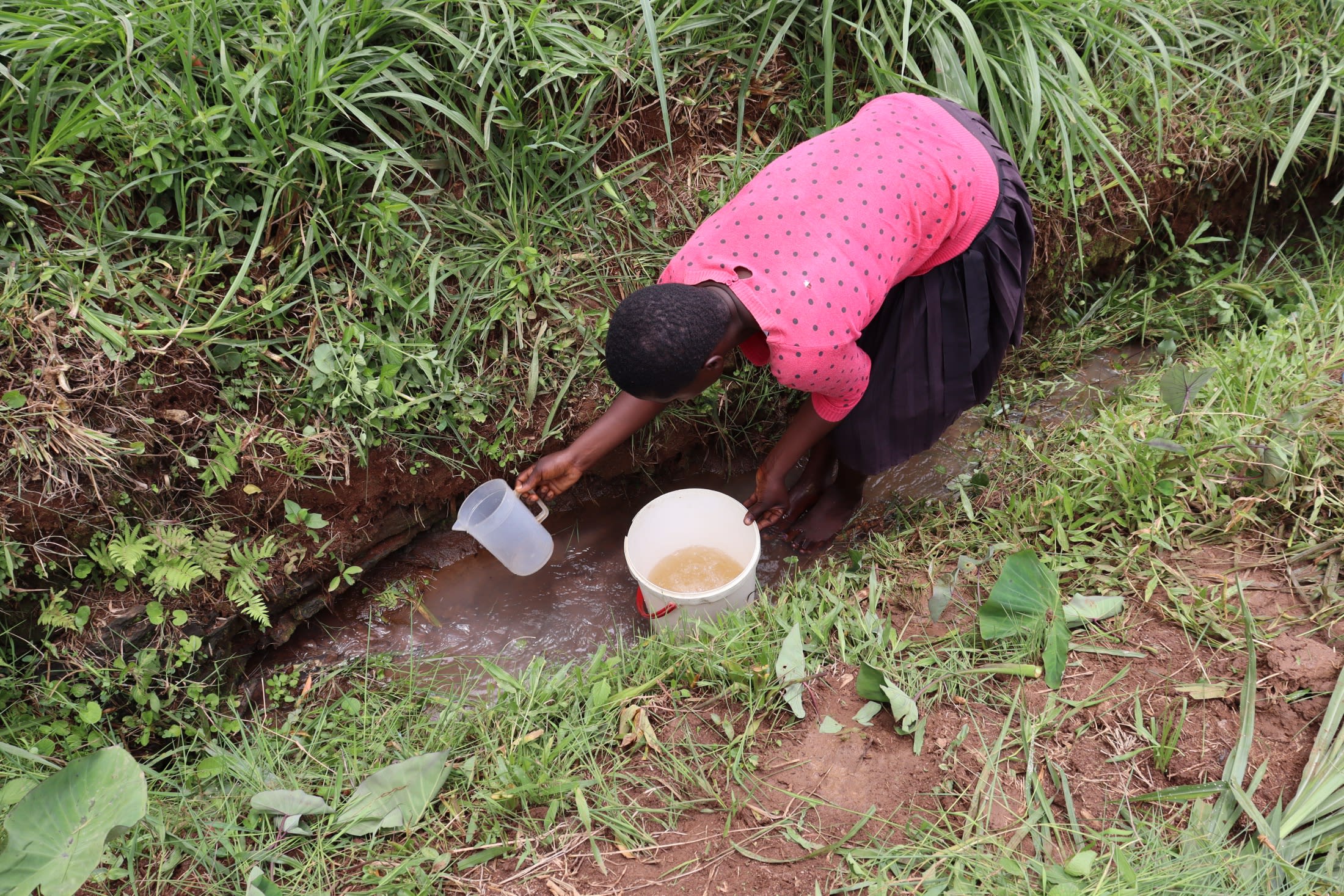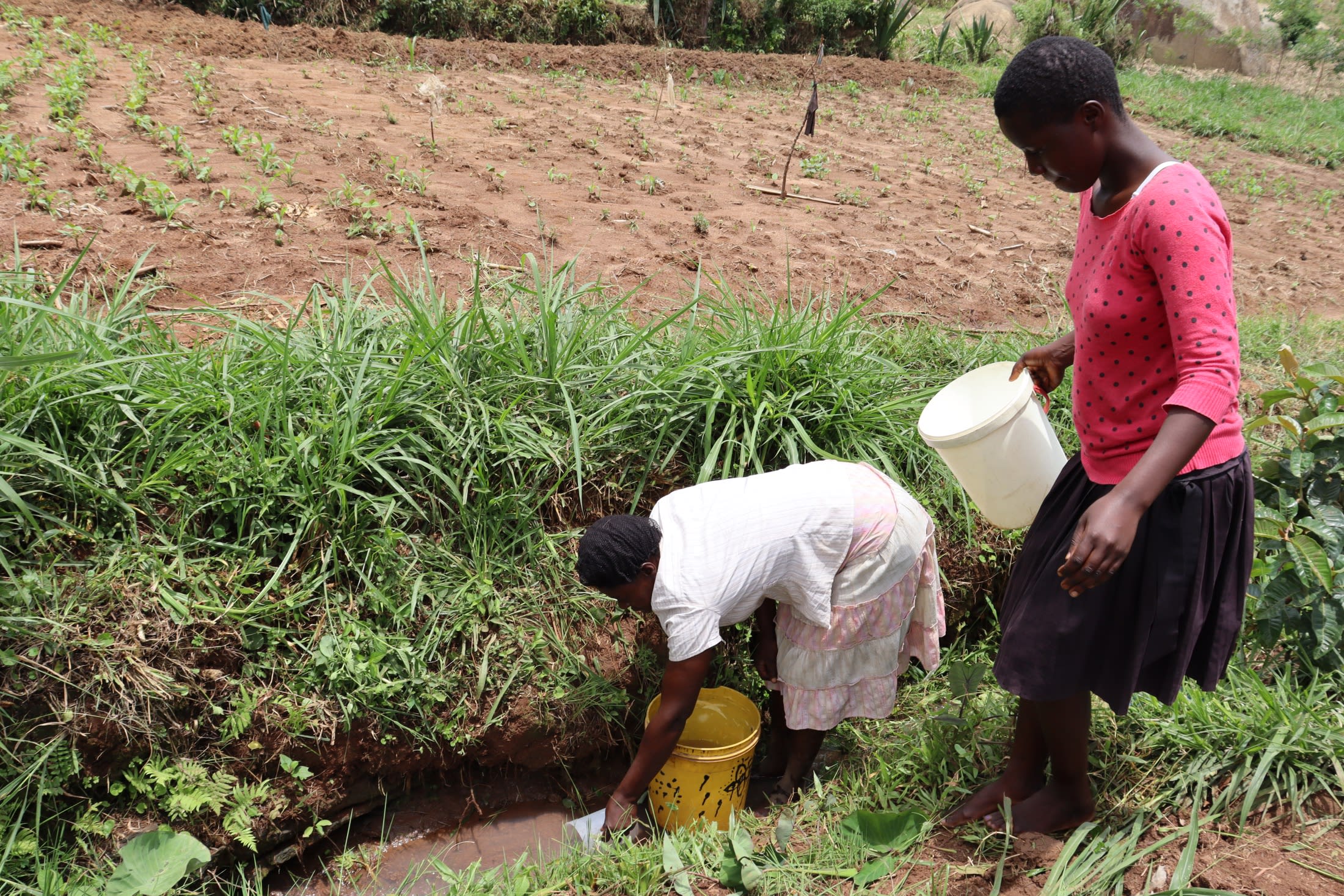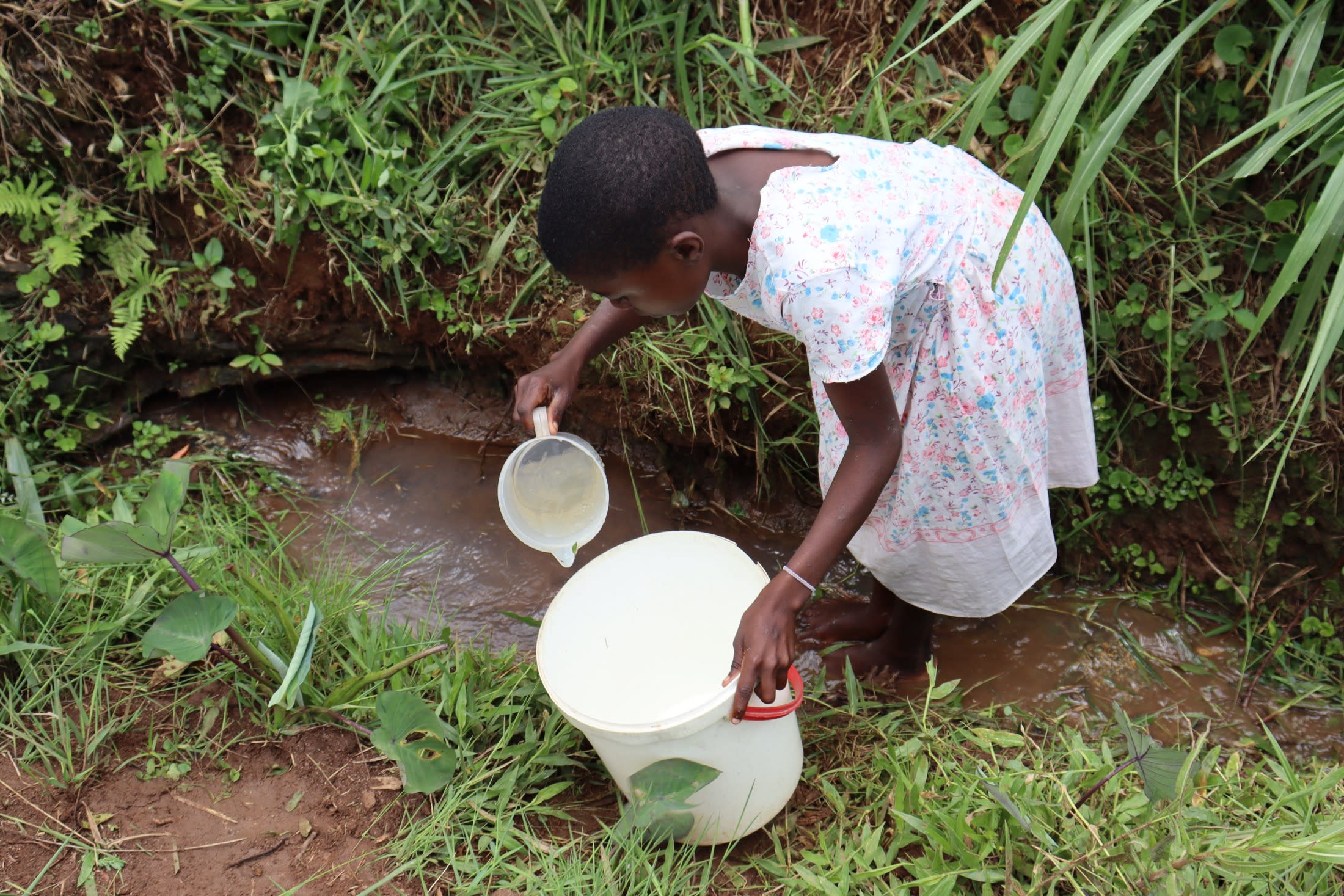Patrick Wanami Spring is exposed to all sorts of contaminants, but it is still the primary water source for the 175 community members of Sambuli.
People do not have any other choice than to drink the contaminated water, but of course, in the long run, people's health is affected.

Community members do their best to wake up early in the morning and collect water before it appears dirty, but that is not enough to protect them from unseen contaminants. Most of the community has reported suffering from typhoid and severe stomachaches due to drinking the water.
Collecting water is a challenging and time-consuming practice. Each person must stoop down and patiently scoop the brown, murky water into their jerrican, pouring it one small scoop at a time.
35-year-old farmer Naomi Ariri (shown collecting water below) commented, "Drawing dirty water from the source has been a challenge to my health. Typhoid disease has really affected me, and this has caused me to use a lot of resources to cater for my medication."

The community members in Sambuli are primarily farmers, so not only do their water-related illnesses steal their health and energy, but it is also stealing their resources. When they become ill, they must surrender their limited finances to pay for their medical care while losing valuable time in their fields, reducing their income.
These illnesses also deteriorate children's health and keep them out of school, impacting their academic success and their futures.
"Consuming dirty water from our unprotected spring has frequently led to stomachache problems. I have been forced to stay at home to seek medical attention," shared student Carolyne, age 12, shown scooping water below.

This spring's protection will improve community members' lives by giving back their time, health, study time, and incomes. And hopefully, with those improvements, the entire community will flourish.
What We Can Do:
Spring Protection
Protecting the spring will help provide access to cleaner and safer water and reduce the time people have to spend to fetch it. Construction will keep surface runoff and other contaminants out of the water. With the community's high involvement in the process, there should be a good sense of responsibility and ownership for the new clean water source.
Fetching water is a task predominantly carried out by women and young girls. Protecting the spring and offering training and support will, therefore, help empower the female members of the community by freeing up more of their time and energy to engage and invest in income-generating activities and their education.
Training on Health, Hygiene, COVID-19, and More
To hold trainings during the pandemic, we work closely with both community leaders and the local government to approve small groups to attend training. We ask community leaders to invite a select yet representative group of people to attend training who will then act as ambassadors to the rest of the community to share what they learn. We also communicate our expectations of physical distancing and wearing masks for all who choose to attend.
The training will focus on improved hygiene, health, and sanitation habits in this community. We will also have a dedicated session on COVID-19 symptoms, transmission routes, and prevention best practices.
With the community's input, we will identify key leverage points where they can alter their practices at the personal, household, and community levels to affect change. This training will help to ensure participants have the knowledge they need about healthy practices and their importance to make the most of their water point as soon as water is flowing.
Our team of facilitators will use a variety of methods to train community members. Some of these methods include participatory hygiene and sanitation transformation, asset-based community development, group discussions, handouts, and demonstrations at the spring.
One of the most important issues we plan to cover is the handling, storage, and treatment of water. Having a clean water source will be extremely helpful, but it is useless if water gets contaminated by the time it is consumed. We and the community strongly believe that all of these components will work together to improve living standards here, which will help to unlock the potential for these community members to live better, healthier lives.
We will then conduct a small series of follow-up trainings before transitioning to our regularly scheduled support visits throughout the year.
Training will result in the formation of a water user committee, elected by their peers, that will oversee the operations and maintenance of the spring. The committee will enforce proper behavior around the spring and delegate tasks that will help preserve the site, such as building a fence and digging proper drainage channels. The fence will keep out destructive animals and unwanted waste, and the drainage will keep the area's mosquito population at a minimum.

 Protected Spring
Protected Spring
 Rehabilitation Project
Rehabilitation Project




































